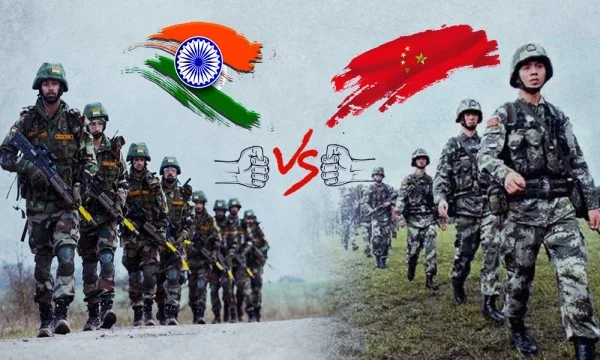Introduction
Chinese troops launched a premeditated attack on Indian soldiers and martyred Col Santosh Babu, the Commanding Officer of 16 Bihar Regiment and 19 other soldiers in the most barbaric manner while de-escalation was in progress in eastern Ladakh’s Galwan valley.
China in its pursuit for regional /global dominance has adopted a two prong policy:
- ·Ideally, China buys out allegiance of weaker nations, as demonstrated through its policy of ‘infrastructure diplomacy’ being promulgated vide Belt and Road Initiative. Examples of such an allegiance in our neighborhood are, CPEC in Pakistan, Infrastructure investments in Nepal, exploration of natural resources in Myanmar, Hambantota port in Sri-Lanka, etc. The larger aim being enslaving the country economically through a debt trap.
- ·In case of nations that are not readily amenable and stands-up to China’s might, like India, Vietnam, Indonesia, Philippines, etc, China applies the tactics of intimidation and military dominance.
China’s Bigger Design to Intimidate India
China has applied the aforesaid protocol and backstabbed India by on one side showing it to the world that India is an aggressor that had violated the LAC, while China had to act in self defence even as the process of disengagement was going on after the corps commander level talks.
The larger design of China in this barbarously violent standoff appears to be as follows:
- ·Seize the initiative by striking first and unexpectedly, especially at the time when COVID-19 cases in India are rising astronomically.
- Play the victim card by projecting India as an aggressor who has occupied Chinese territory.
- Quickly terminate the hostilities, before pressure from the global community mounts.
- Stage forward its defensive line, secure critical passes, dominating tactical features and create operational opportunities for furthering its subsequent operations. Point in case being that China has occupied dominating heights in Galwan valley, to assume control over Galwan River, interdict Indian military convoy movement for servicing the Daulat Beg Oldi post and airstrip, as also, deny India the ability to dominate the Karakorum Pass.
- In the process, China will also be able to foreclose some of the offensive options that may be presently available to India in the area.
- Consequently, China will be able to bring India to the negotiating table and dictate terms for settlement of the dispute from a position of strength. At the same time, China will be in a position to occupy the moral high ground through its ‘reasonableness’ and ‘appeal for peace’.
- ·Lastly, China through its aggressive stance intends to deliver a sharp demonstrative military rap on the Indian knuckles and exhibit its regional supremacy.
China is NOT Invincible
China has to understand that India has come a long way from the 1962 debacle. India no longer finds China to be a ten ton crazy Godzilla that it is being made out to be.
The People’s Liberation Army (PLA) of China has its own inherent vulnerabilities, like:
- Lack of battle hardened troops, unlike India which has been engaged in counter terrorism operations for decades. The Sino-Vietnam war in 1979 was the last military venture of China in which Vietnam had out performed China.
- The rapid modernisation of PLA has overstretched the institutional ability to adapt to the resultant changes and it is suspected that the man behind the machine may not be as effective to deliver on the ground.
- China seriously lacks inter-services integration, essentially required to win a battle because of preferential treatment given to its ground forces.
- Chinese army has a high ‘teeth-to-tail’ ratio, with just about 850,000 ranks and files reportedly form part of the combat units, out of its total 1.6 million standing army.
- Lastly, the pampered youth as a result of ‘one child policy’ in China do not easily take to the hardships of life in the barracks. Hence, the morale and affinity to train is expected to be low.
How must India Respond?
China will very closely observe India’s political and military resolve and our response as a nation will decide our future standing in the regional arena.
This is no time for unwarranted social media jingoism that may panic the government into taking some kind of a hasty retaliatory action that may cost the nation dearly.
The response to Chinese barbarism must be well calibrated to appropriately cover the Diplomatic, Politico-Military and Economic domains.
Diplomatic Level
India must closely integrate and align with the countries that are hostile to China, like Japan, Vietnam, Indonesia, Philippines, etc and project a collective front.
China is confronted with numerous internal challenges of maintaining political security and social stability that can be exploited by India. To name a few, a democratized Taiwan poses threat of secession and of separate identity, a liberal Hong Kong wants political freedom, Tibetans have upped the ante for a free Tibet and a violent demand of Uyghurs, the non-Han Muslim population in the Xinjiang province for right to self-determination.
Politico-Military Level
The politico-military response must demonstrate the political will, sending out a clear signal that India will not cow-down to aggressive designs of China.
The rules of engagement must be clearly spelt out to the troops deployed on ground. They have to be extremely vigilant and vary of the Chinese, performing all movement and activities tactically.
Militarily we must maintain a more assertive and forceful stance in projecting our footprints. At the tactical level, renewed emphasis must be laid on patrolling and surveillance using satellites, unmanned aerial vehicles (UAVs) and battle field surveillance radars.
Moreover, India needs to improve its force level along the LAC and NE border with China, besides going on an overdrive to improve the infrastructure and connectivity in these areas for quick mobilization of forces.
Deployment of strategic assets, keeping the threat perception in mind, will serve as a serious deterrent and ‘a threat in being’, e.g. deployment of Agni V.
Economic Level
India must go for an all out economic war that hurts China, even if it amounts to baring the pain ourselves.
India imports goods worth 5.25 lakh crores from China. Though it amounts to only 2% of overall exports of China, still the trade deficit (as we import much more than we export) is $57billion out of the total $422billion that China enjoys globally.
In other words, by allowing such a huge trade surplus to China we are literally financing China to harm us.
It is understood that boycott of Chinese goods will hurt Indian consumers as the products are comparatively much cheaper and we may lose millions of jobs in logistics and trades that involve dispensing of these products.
However, no one in this world is indispensible. We can look at other countries, like South Korea, Japan, Taiwan, US, Europe, etc for import of such products.
By boycotting Chinese products, the domestic cost of products may rise in the short run, but the same will also prompt local production and importing from other destinations.
The Confederation of All India Traders (CAIT) has called for a boycott of Chinese goods by releasing a list of 450 broad categories of commodities, which cover over 3000 Chinese products. The trade body has said that its objective is to reduce the import of Chinese finished goods by Rs 1 lakh crore by December 2021.
Lastly, the effort to boycott Chinese goods has to become a mass movement in India, which must be followed up by imposing heavy tariffs and ban on Chinese technologies by government of India to be able to deliver the desired economic blow to China.






